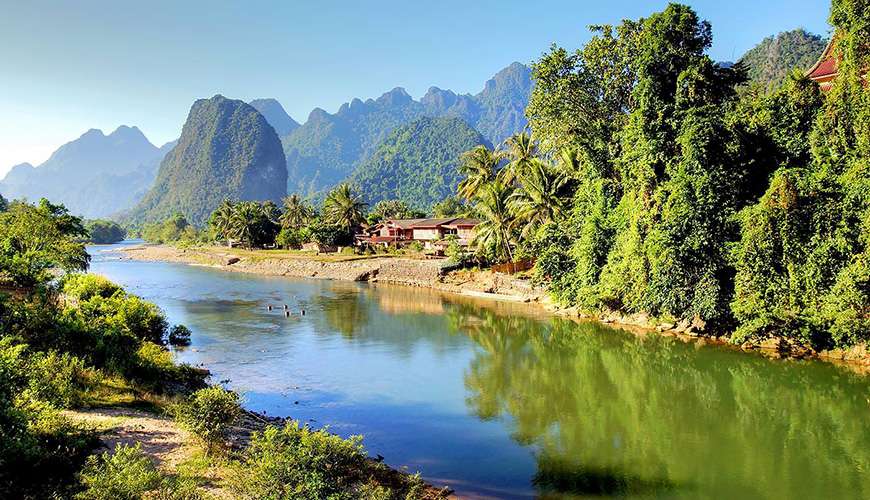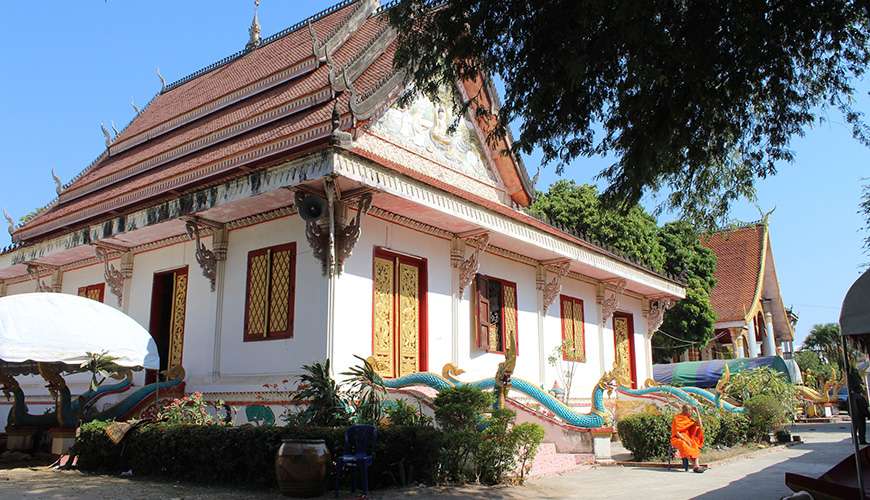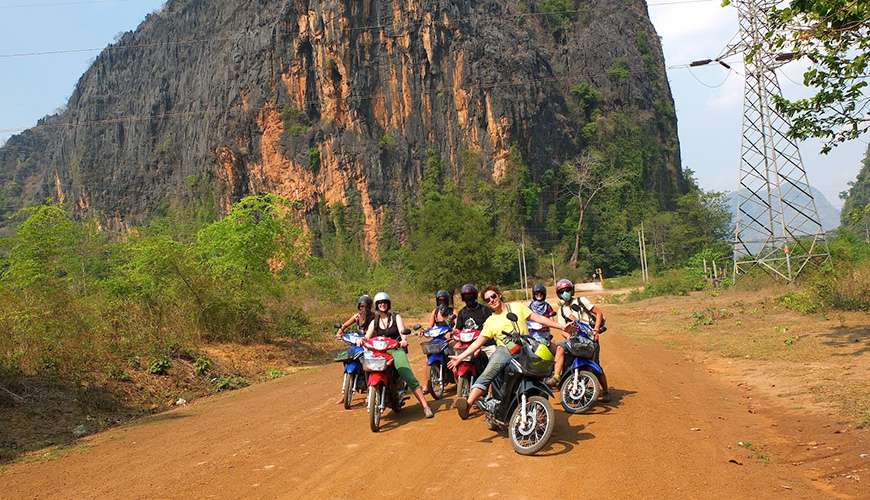Running from Paksan in the north to Savannakhet in the south,
Central Laos consists of the provinces of Bolikhamsai, Khammuan and Savannakhet. To the east, the Ammanite mountains runs along its border with Vietnam, paralleling the Mekong River separating it from Thailand to the west. While Bolikhamsai and Khammuan are among the most sparsely populated provinces in the country, the population explodes in Savannakhet, which in contrast to its northern brothers is the most populated Laotian province.

The mighty Mekong defines life in Central Laos.
Like the rest of Laos, the region was dominated by the mighty Khmer Empire in its heyday. After the catastrophic collapse of the empire, the Lan Xang kingdom, centred on Luang Prabang, united all of Laos for the first time in history, before falling to a succession crisis a few centuries later. However, the region continued to be under control of Northern Laos, this time in the form of the independent kingdom of Vientiane. This period was fleeting, and ended after less than a hundred years with the conquest of the region by the Kingdom of Siam, before being wrested away by French Colonial ambitions in Indochina during the late 19th and early 20th centuries.
Due to the presence of the infamous Ho Chi Minh Trail, the region suffered greatly during the Indochina Wars, known in Laos as the “Secret War”, due to the undeclared nature of the conflict. It shares this legacy with the rest of the country, and as such struggles with unexploded ordnances to this day.
Like almost everywhere in Laos, the people are extremely friendly and welcoming, always making you feel like a valued guest to their country. The people are also highly diverse, with dozens of different ethnic minorities making their home here, including Tahoy, Makong, Tai Dam, Alak, Katu, Mon Khmer and many more.

Laotian architecture often draws on a wide variety of influences, from French to Thai to Chinese.
The climate in the region is similar to both the south and the north, with the lowlands around the river reaching much higher temperatures than up in the mountains of the Ammanite range. The monsoon seasons are also the same, with the rainy season lasting from May through October, and the dry season split into a cool period from November through February and a hot period in March and April.
You’ll probably start your journey through Central Laos in Paksan, but we don’t recommend staying here long, as it’s an entirely forgettable town. Rather, spend a night to rest if necessary and then continue on south. The first stop will be Pak Kading, a typical sleepy Mekong town, but featuring the turquoise water of the best preserved river in all of Laos. The town is also a great base to explore Nam Kading National Park Area. Though access is sometimes tricky due to authorities periodically shutting down river access, the cacophony of animal noises surrounding you will make it entirely worth it.
Keep heading south and you will reach Tha Kaek, yet another sleepy river town. Once again, the reason for visiting is not the town, but the surrounding countryside. Use Tha Kaek as your hub to visit Phu Hun Bun NPA, where giant limestone peaks rise up over turquoise rivers and dense monsoon forests. Within the park are also the famous caves of Tham Kang Lor and Tham Pa Seuam, highlights of any Laos itinerary.

The Pakse Loop is a famous route for adventurous travellers wishing to see an authentic side of Laos
In Savannakhet Province, you’ll finally find a town worth spending some time in, name Savannakhet Town itself. The Old Quarter here is incredibly charming, and contains many great wats as well as a fascinating Dinosaur Museum. Of course there are nature sights here too, with the nearby Dong Phu Vieng National Park Area and Phu Xang Hae National Park Area, both teeming with wildlife.
Like in Southern Laos, the Mekong plays an integral part in local life, and as such seafood is plentiful here. Classic Laotian seafood staples are fish larb, fried river fish, and algae soup. Another classic type of food from Central Laos is the wide variety of grilled meats sold everywhere, with the chicken and duck being particularly tasty. There is also the local favourite of Khao Piak Sen, made from thick noodles in broth, topped with deep fried pork belly or chicken, sure to fill even the most voracious eaters!
While the towns and cities of Central Laos are nothing special, it’s the regions incredible nature in the form of the Natural Protected Area that is the true draw here. Because of this, the region is a must-see for any nature-loving visitor to Laos.